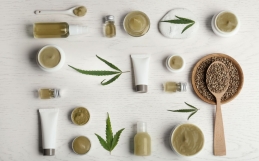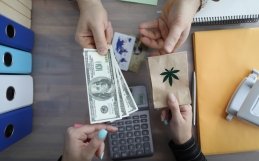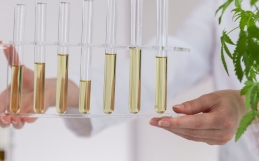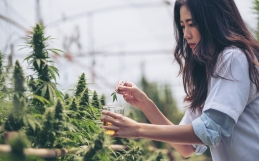At MyDx, we believe in the medicinal and other properties of cannabis and in staying knowledgeable on current events and the state of marijuana in our country.
In this post, we are diving into the use of marijuana in the ongoing opioid crisis in America.
Cannabis and Opioids
There has been more and more research over the last several years suggesting marijuana can be a key component in helping to combat the opioid crisis in the United States.
It started back in the mid to late 1990s, when major pharmaceutical companies got vocal about opioid medications for pain relief and told the world that patients would not become addicted to them, which resulted in doctors prescribing opioids for pain relief more often.
Unfortunately, this led to widespread misuse and abuse of these pain relievers, then it became more commonly known they were, in fact, incredibly addictive.
This had led to more and more people becoming addicted to opioids in the last 20 years, which has resulted in many overdoses. According to the National Center for Health Statistics (part of the CDC), there were nearly 35,000 deaths in 2015 due to opioid overdoses, and a 2.8-fold increase in the total number of deaths between 2002 and 2015. And over 64,000 drug deaths from overdoses in 2016 from opioids and other drugs.
According to the U.S. Department of Health and Human Services, in 2016 “116 people died every day from opioid-related drug overdoses.”
In 2017, they declared a public health emergency to address the national opioid crisis.
Clearly, it is a huge problem which truly needs addressing.
How can marijuana help?
One of the cannabinoids in the marijuana plant is CBD. CBD has pain relieving properties, as shown in many studies and also directly from users.
The long and short of it is that CBD and other cannabinoids in marijuana can help relieve the chronic pain that many opioid addicts suffer from, thus allowing them to not need the opioid to function. It can also assist with some of the symptoms of withdrawal while detoxing from opioids, such as nausea and trouble sleeping.
CBD for addressing pain and opioid withdrawals has been highly publicized, though the lawmakers at the Federal level still do not seem to be on board with it.
Men’s Health Magazine recently wrote an article on it, featuring the story of Che and his experience with addiction and recovery using CBD.
They went on to state, “While there are currently 17 states with laws that allow for the use of CBD to treat conditions like epilepsy, there are nonetheless extensive government restrictions for researchers who wish to study the drug: they must first get a license from the Drug Enforcement Agency (DEA), followed by an OK from the FDA to give the drug to patients. For perhaps this reason, there have been no long-term clinical studies on CBD’s effects on human subjects.
“We’ve only done short-term studies,” says Dr. Yasmin Hurd, professor of psychiatry, neuroscience, and pharmacology and director of the Addiction Institute at the Icahn School of Medicine at Mount Sinai.”
Vox also touched on the subject, saying, “There’s also evidence that increased access to marijuana reduces some opioid use: A growing body of research indicates that medical marijuana legalization, in particular, can lower the number of people misusing opioids.”
CNN also published an article on the topic containing a quote from Dustin Sulak, a Maine-based doctor of osteopathic medicine. He said, “There’s no pill, there’s no spray, no drop, no puff [that] can completely solve this problem,” Sulak told Gupta. “But cannabis, when it’s used in the right way, can take a big bite out of it.”
Marijuana has been shown to have many medicinal properties, and it is important that the lawmakers begin the process of reclassifying it. CNN’s article went on to say “According to the Drug Enforcement Administration, marijuana is a Schedule I drug, meaning it has no medical use and a high potential for abuse.”
Which as we know and many studies have shown, this is simply not true.







